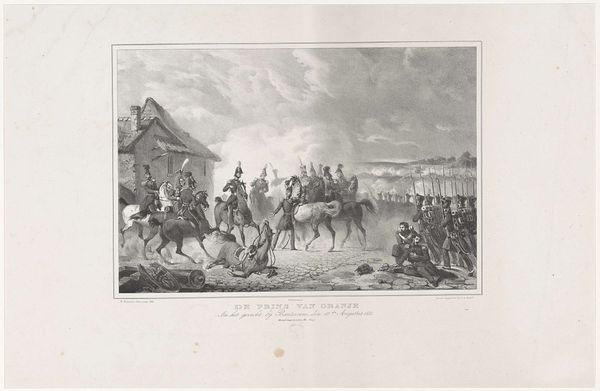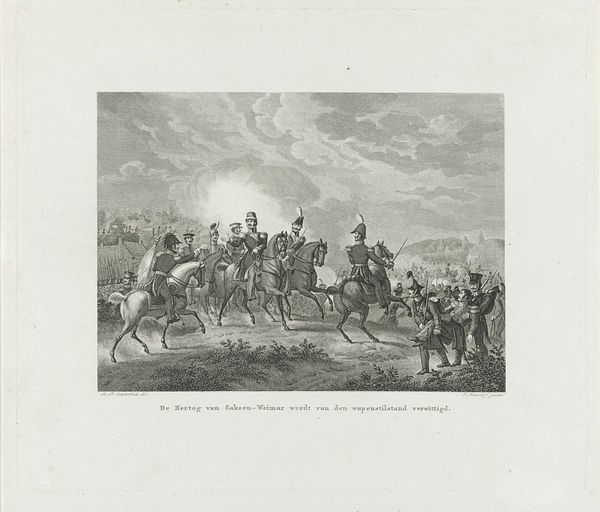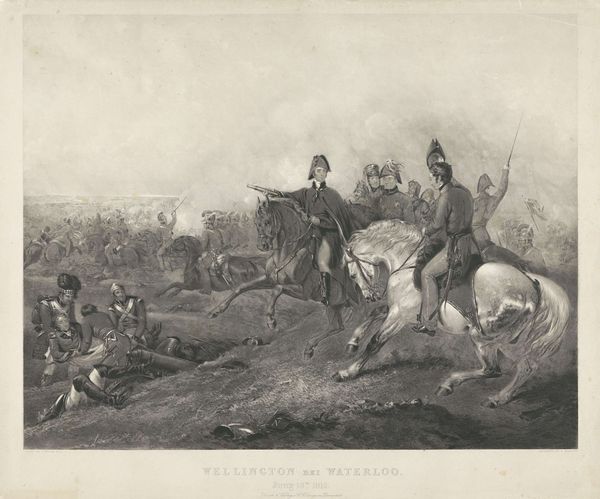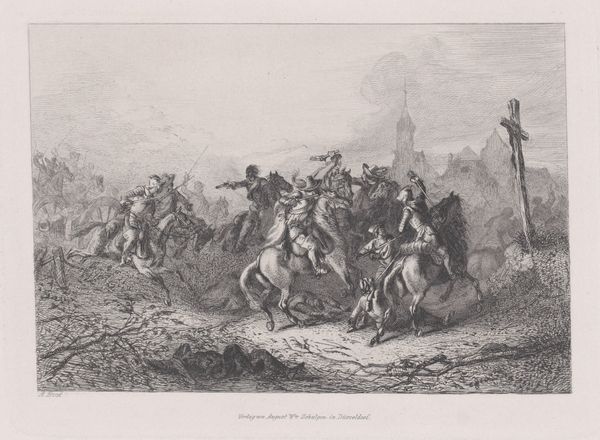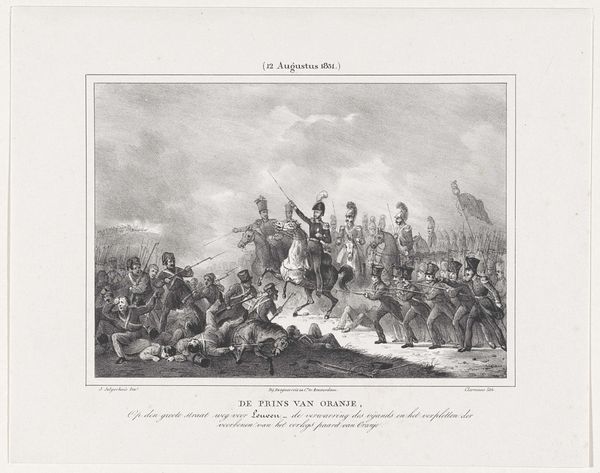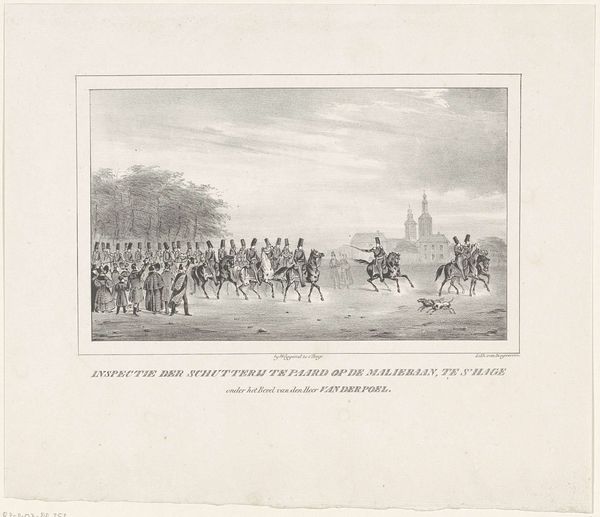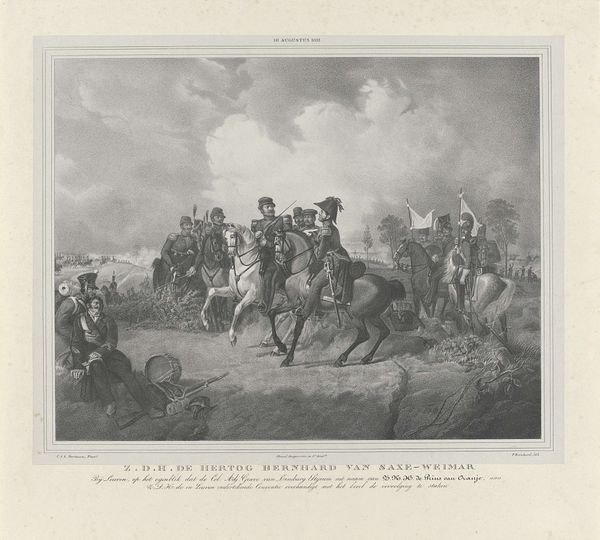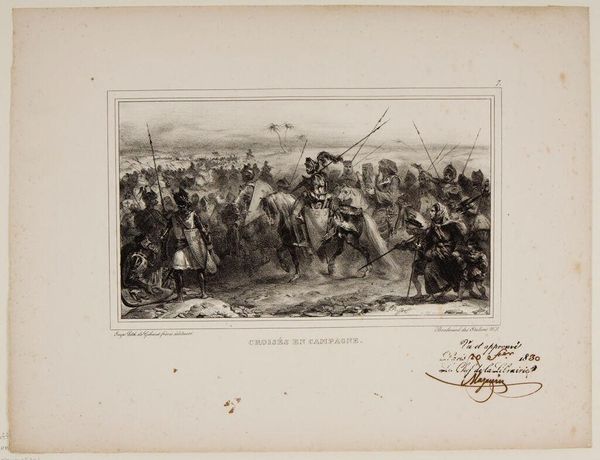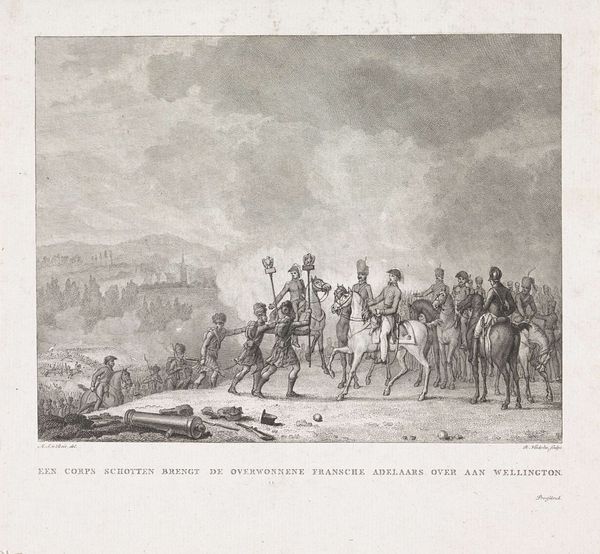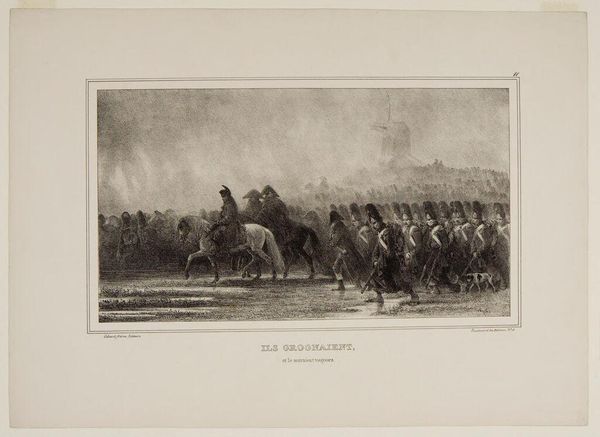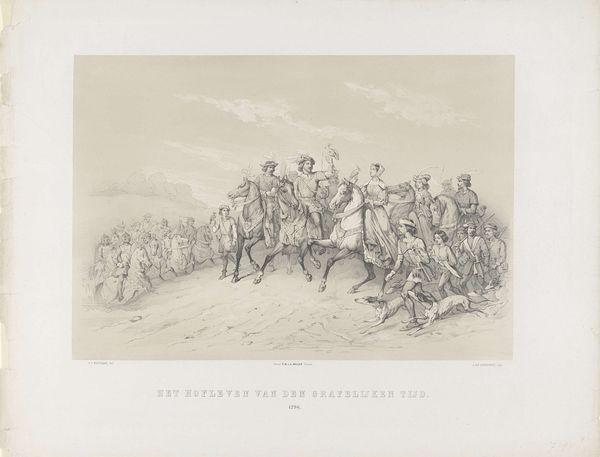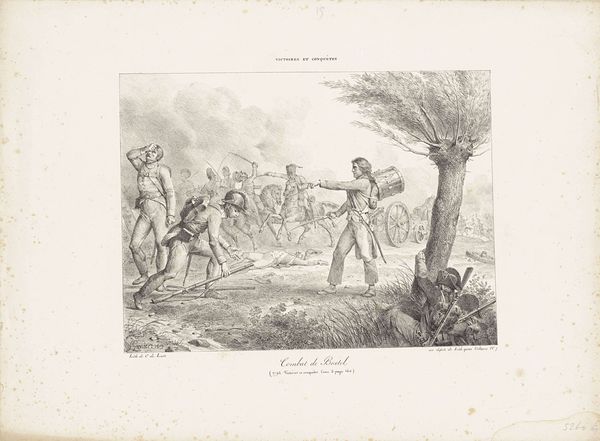
Frederik Hendrik bij het beleg van Den Bosch, 1629 1866 - 1868
0:00
0:00
Dimensions: height 188 mm, width 256 mm
Copyright: Rijks Museum: Open Domain
Jan Frederik Christiaan Reckleben created this print of Frederik Hendrik during the siege of Den Bosch, sometime in the mid-19th century. It's made using a technique called etching, where lines are incised into a metal plate, inked, and then transferred to paper under pressure. This reproductive technique, which relies on craft skill, allowed images to be circulated widely. Etching, as a process, democratizes image-making, offering a contrast to unique and expensive paintings. Here, it serves to memorialize a military victory. The labor-intensive process of etching translates the grand narrative of war into a commodity, available for consumption. Each line meticulously carved into the plate represents a moment in time, a strategic decision, or a soldier's sacrifice, all mediated through the etcher’s hand. Consider how the act of making—the deliberate, detailed work of the etcher—influences our understanding of the depicted event. It is through the etched line that history is rendered, not just as a sequence of events, but as a crafted narrative, blurring the lines between art, craft, and historical record.
Comments
No comments
Be the first to comment and join the conversation on the ultimate creative platform.
